You searched for: 巴拿马短信通道【TG飞机:@bapingseo】谷歌自然優化【TG电报:@bapingseo】推特全世界广告投放【Telegram:@bapingseo】888真人手机版30版nba投注网哪个比较好赛事直播?4RqCQN/dH4uV0.html
<< Previous | Displaying results 201-250 of 603 for "巴拿马短信通道【TG飞机:@bapingseo】谷歌自然優化【TG电报:@bapingseo】推特全世界广告投放【Telegram:@bapingseo】888真人手机版30版nba投注网哪个比较好赛事直播?4RqCQN/dH4uV0.html" | Next >>
-
Nazi Rule
ArticleAfter they rose to power in 1933, Hitler and the Nazis eliminated democratic freedoms and took control of all aspects of public life in Germany. Learn more.

-
1938: Key Dates
ArticleExplore a timeline of key events in the history of Nazi Germany during 1938.

-
The 84th Infantry Division during World War II
ArticleThe 84th Infantry Division participated in major WWII campaigns and is recognized for liberating two Neuengamme subcamps, Hannover-Ahlem and Salzwedel, in 1945.
-
Haviva Reik
Media EssayHaviva Reik was one of 32 Jewish parachutists from Palestine who volunteered to join the British army and infiltrate German-occupied Europe. Reik was sent to Slovakia on a mission to aid Jews during the Slovak nationa...
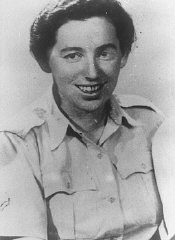
-
Lodz ghetto
FilmThe German army occupied Lodz, Poland, in September 1939. From early February 1940, Jews in Lodz were forced to move to a designated ghetto area, which was sealed on April 30, 1940. This German footage illustrates conditions during winter in the Lodz ghetto. Winter in the ghettos aggravated existing hardships, depleting already sparse supplies of food and fuel.
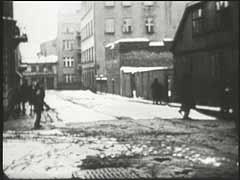
-
Conditions in the Warsaw ghetto
FilmThe Nazis sealed the Warsaw ghetto in mid-November 1940. German-induced overcrowding and food shortages led to an extremely high mortality rate in the ghetto. Almost 30 percent of the population of Warsaw was packed into 2.4 percent of the city's area. The Germans set a food ration for Jews at just 181 calories a day. By August 1941, more than 5,000 people a month succumbed to starvation and disease.
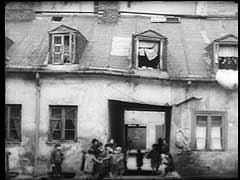
-
Conditions in the Warsaw ghetto
FilmThe Nazis sealed the Warsaw ghetto in mid-November 1940. German-induced overcrowding and food shortages led to an extremely high mortality rate in the ghetto. Almost 30 percent of the population of Warsaw was packed into 2.4 percent of the city's area. The Germans set a food ration for Jews at just 181 calories a day. By August 1941, more than 5,000 people a month succumbed to starvation and disease.
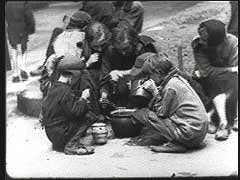
-
Lion Feuchtwanger in New York
PhotoAuthor Lion Feuchtwanger in New York, November 17, 1932. Feuchtwanger's 1930 novel Erfolg (Success) provided a thinly veiled criticism of the Beer Hall Putsch and Hitler's rise to leadership in the Nazi Party. He was targeted by the Nazis. After the Nazi takeover on January 30, 1933, his house in Berlin was illegally searched and his library was plundered during his lecture tour in the United States.
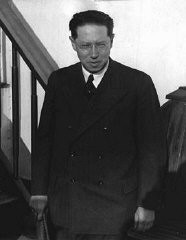
-
Ernest Hemingway
PhotoPortrait of Ernest Hemingway by Helen Pierce Breaker. Paris, France, ca. 1928. In 1933, Nazi students at more than 30 German universities pillaged libraries in search of books they considered to be "un-German." Among the literary and political writings they threw into the flames were the works of Ernest Hemingway.
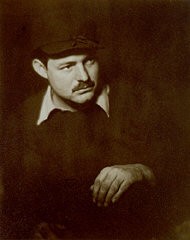
-
Cover of A Farewell to Arms
PhotoCover of Ernest Hemingway's A Farewell to Arms. (1929 cover. Princeton University Library.) In 1933, Nazi students at more than 30 German universities pillaged libraries in search of books they considered to be "un-German." Among the literary and political writings they threw into the flames during the book burning were the works of Ernest Hemingway.
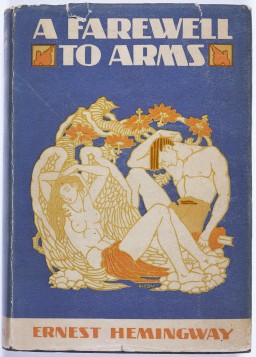
-
Hemingway on a safari
PhotoAmerican novelist Ernest Hemingway on safari, ca. 1933. In 1933, Nazi students at more than 30 German universities pillaged libraries in search of books they considered to be "un-German." Among the literary and political writings they threw into the flames were the works of Ernest Hemingway.

-
Ernest Hemingway
PhotoAuthor Ernest Hemingway aboard the boat Pilar, ca. 1950. In 1933, Nazi students at more than 30 German universities pillaged libraries in search of books they considered to be "un-German." Among the literary and political writings they threw into the flames were the works of Ernest Hemingway.
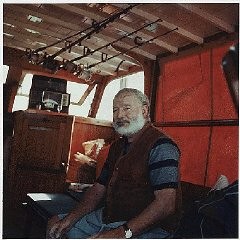
-
Henrietta and Herman Goslinski
PhotoIn 1942, Henrietta and Herman Goslinski went into hiding to avoid deportation from the Netherlands. Their rescuer could not, however, also take their infant daughter Berty. The Dutch resistance moved Berty frequently; she was eventually moved more than 30 times. During the two-and-a-half years apart, the parents saw Berty only once and received this single photograph of her taken while she was in hiding.

-
US troops view corpses of prisoners massacred by SS guards
PhotoUS troops view corpses of prisoners massacred by SS guards in a wooded area near the Kaufering IV subsidiary camp of the Dachau concentration camp. Landsberg- Kaufering, Germany, April 30, 1945.
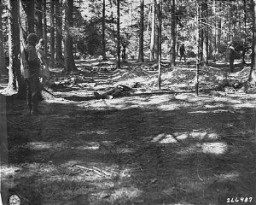
-
Torchlight parade in honor of Hitler's appointment as chancellor
PhotoAdolf Hitler, Wilhelm Frick, and Hermann Göring wave to a torchlight parade in honor of Hitler's appointment as chancellor. Behind Göring stands Rudolf Hess. Berlin, Germany, January 30, 1933.

-
Babi Yar massacre
PhotoOn September 29-30, 1941, SS and German police units and their auxiliaries, under guidance of members of Einsatzgruppe C, murdered the Jewish population of Kiev at Babi Yar, a ravine northwest of the city. This photograph shows groups of Jews being forced to hand over their possessions and undress before being shot in the ravine.
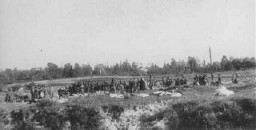
-
Soviet soldiers guard the entrance to Hitler's underground bunker
PhotoSoviet soldiers guard the entrance to Adolf Hitler's underground bunker. Upon the advance of Soviet forces through the streets of Berlin, Hitler committed suicide here on April 30, 1945, rather than face capture. Berlin, Germany, 1945.
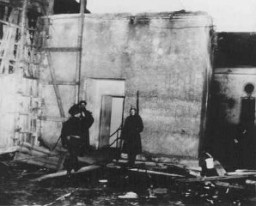
-
Boxcars containing bodies of victims outside the Dachau camp
PhotoUS soldiers discovered these boxcars loaded with dead prisoners outside the Dachau camp. Here, they force German boys—believed to be members of the Hitler Youth (Hitlerjugend; HJ)—to view the atrocity. Dachau, Germany, April 30, 1945.
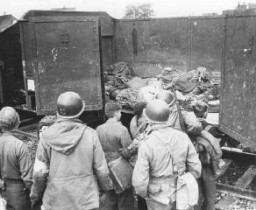
-
Cover of a work by Sigmund Freud
PhotoSigmund Freud: Massenpsychologie und Ich-Analyse, cover. In 1933, Nazi students at more than 30 German universities pillaged libraries in search of books they considered to be "un-German." Among the literary and political writings they threw into the flames were all the works of Sigmund Freud that were published by 1933.
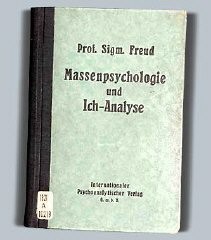
-
Symbolic groundbreaking ceremony
PhotoMembers of the United States Holocaust Memorial Council pose with two milkcans containing a Scroll of Remembrance signed by Holocaust survivors at a symbolic groundbreaking ceremony for the United States Holocaust Memorial Museum. Benjamin Meed is second from the left. Washington, DC, April 30, 1984. During groundbreaking ceremonies in April 1985, the containers were buried on the site of the Museum.
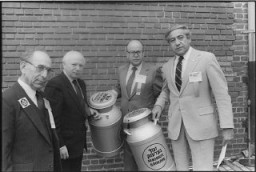
-
Aftermath of pogrom in Iasi
PhotoRoma (Gypsies) remove bodies from the Iasi-Calarasi death train during its stop in Tirgu-Frumos. Two trains left Iasi on June 30, 1941, bearing survivors of the pogrom that took place in Iasi on June 28-29. Hundreds of Jews died on the transports aboard crowded, unventilated freight cars in the heat of summer. Romania, July 1, 1941.
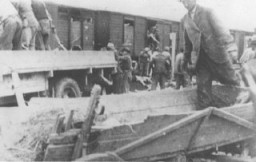
-
An emaciated Soviet prisoner of war soon after liberation
PhotoSoon after liberation, a US Army doctor examines an emaciated forced laborer, a Soviet prisoner of war. Dortmund, Germany, April 30, 1945.
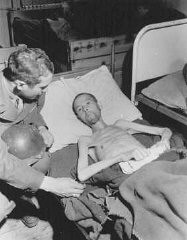
-
Norman Salsitz's grandchildren
PhotoNorman's grandchildren, Dustin, Aaron, and Michael. September 30, 1993. With the end of World War II and collapse of the Nazi regime, survivors of the Holocaust faced the daunting task of rebuilding their lives. With little in the way of financial resources and few, if any, surviving family members, most eventually emigrated from Europe to start their lives again. Between 1945 and 1952, more than 80,000 Holocaust survivors immigrated to the United States. Norman was one of them.
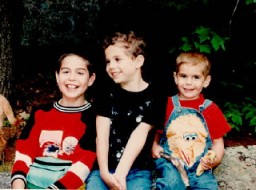
-
Ernst Toller
ArticleErnst Toller was one of the best-known German dramatists of the 1920s. He wrote against Nazism, and was among those whose works were burned under the Nazi regime.
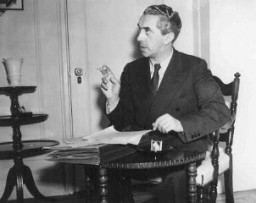
-
Documents Required to Obtain a Visa
ArticleGerman Jews trying to immigrate to the US in the late 1930s met extreme bureaucratic hurdles, including documentation that was often virtually impossible to obtain.
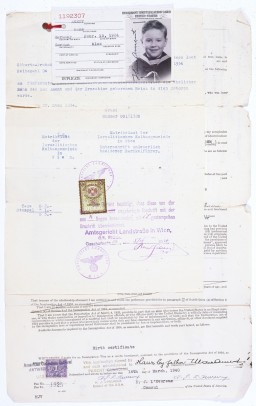
-
World War II in Eastern Europe, 1942–1945
ArticleBefore 1942, Nazi Germany had expanded across much of Europe. Learn more about major Allied victories in eastern Europe that led to the German surrender.
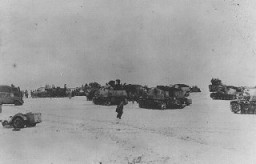
-
The Holocaust in Odesa
ArticleIn October 1941, Romania, an ally of Nazi Germany, perpetrated mass killings of Jews in Odesa. Learn more about the Holocaust in Odesa and Ukraine.

-
Artist on the Blacklist: Ludwig Meidner
ArticleLudwig Meidner was an Expressionist artist and poet. He was on the list of banned writers and artists in Nazi Germany. Monographs about him were burned in 1933.
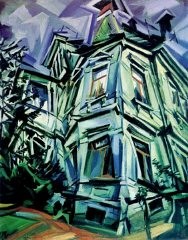
-
Bertolt Brecht
ArticleBertolt Brecht was a leading German dramatist, well known for his political films and plays. His works were burned during the Nazi book burnings of 1933. Learn more.

-
Alfred Kerr
ArticleGerman Jewish writer Alfred Kerr was a well known theater critic during the Weimar period. His works were burned during the Nazi book burnings of 1933.
-
Helen Keller
ArticleHelen Keller was an author, suffragist, and disability rights advocate. Her socialist and anti-war writing was burned under the Nazi regime in 1933. Learn more.
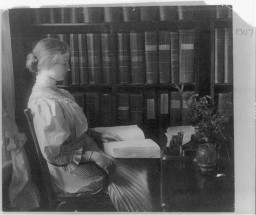
-
Eschwege Displaced Persons Camp
ArticleAfter WWII, many Holocaust survivors, unable to return to their homes, lived in displaced persons camps in Germany, Austria, and Italy. Read about Eschwege DP camp.
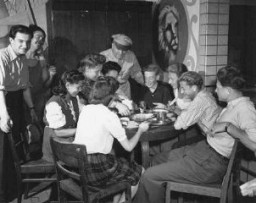
-
Georg Bernhard
ArticleGeorg Bernhard was a prominent financial columnist. The Nazis declared that German journalism must be "cleansed" of Jews. Bernhard’s work was burned in 1933.
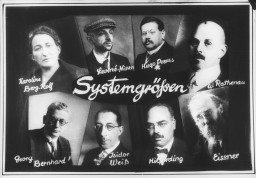
-
Georg Grosz
ArticleGeorg Grosz was a German artist of the Dada movement. His books, which had many of his best-known plates, were burned in Nazi Germany in 1933. Learn more.

-
Heinrich Mann
ArticleHeinrich Mann was an author and early target of the Nazis for his political views. His writings were among those burned under the Nazi regime in 1933. Learn more.
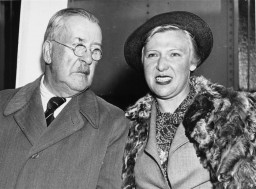
-
Sholem Asch
ArticleSholem Asch was a Yiddish dramatist and novelist. He depicted small town Jewish life and socialist themes. His work was burned in Nazi Germany in 1933.

-
Richard Nikolaus Coudenhove-Kalergi
ArticleCount Richard Nikolaus Coudenhove-Kalergi founded the "Pan-Europe" movement. His works were tossed into the flames during the Nazi book burnings of 1933.
-
Henri Barbusse
ArticleHenri Barbusse was a French author who wrote pacifist and socialist works. In 1933, his writings were burned under the Nazi regime. Learn more.
-
Vicki Baum
ArticleVicki Baum was a bestselling author who embraced the ideals of liberation for women. Her works were burned during the Nazi book burnings of 1933. Learn more.
-
Friedrich Wilhelm Förster
ArticleFriedrich Wilhelm Förster was an author, educator, and philosopher. In 1933, his works were denounced as subversive and burned in Nazi Germany. Learn more.
-
Werner Hegemann
ArticleWerner Hegemann was a city planner and author. The Nazis opposed his views of American architecture and German historical figures. His book was burned in 1933.
-
Rudolf Hilferding
ArticleRudolf Hilferding was a well-known socialist. Also Jewish, he was persecuted by the Nazis and later died in prison. His books were burned in Germany in 1933.

-
Morris Hillquit
ArticleMorris Hillquit was a prominent theoretician of the socialist movement in the United States. His work was burned in the Nazi book burnings of 1933. Learn more.
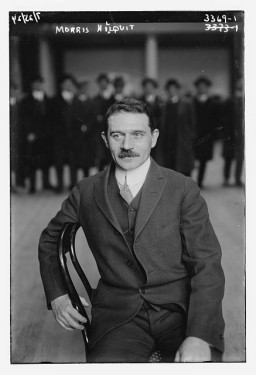
-
Erich Kästner
ArticleErich Kästner was a popular political satirist and left-liberal author whose works were burned under the Nazi regime in 1933. Learn more.
-
Karl Kautsky
ArticleKarl Kautsky was a leading Marxist and Socialist theoretician in the Austrian Social Democratic movement. His books were burned in Nazi Germany in 1933. Learn more.

-
Ferdinand Lassalle
ArticleFerdinand Lassalle was a founder of the German labor movement. Some 70 years after his death, his works were burned in Nazi Germany for their socialist doctrine.
-
Vladimir Lenin
ArticleVladimir Lenin was the leader of the new Soviet government after the Russian Revolution of 1917. His works were burned in Nazi Germany in 1933. Learn more.
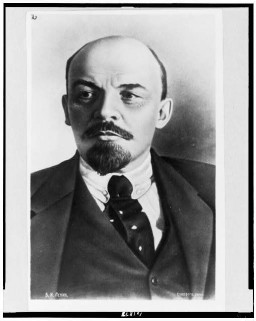
-
Arnold Zweig
ArticleArnold Zweig was a German novelist and playwright. The Nazis denounced him as a pacifist, and his works were burned in 1933. Learn more.
-
Theodor Wolff
ArticleTheodor Wolff was an influential German journalist and vocal opponent of the Nazis. His work was burned during the Nazi book burnings of 1933. Learn more.
-
Jakob Wassermann
ArticleJakob Wassermann was a popular German Jewish author. After the Nazi rise to power, he was forced to leave Germany. His works were burned in May 1933. Learn more.
